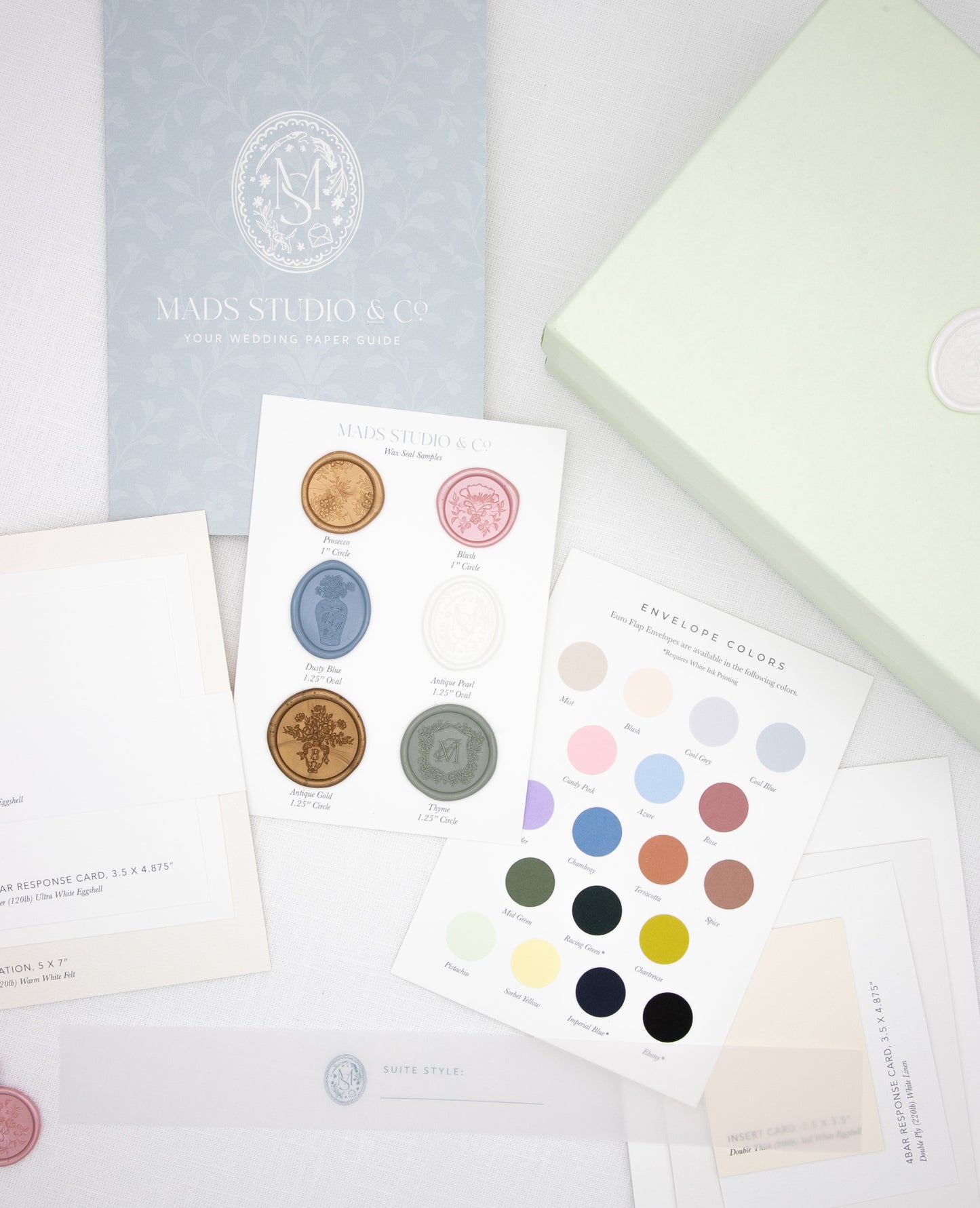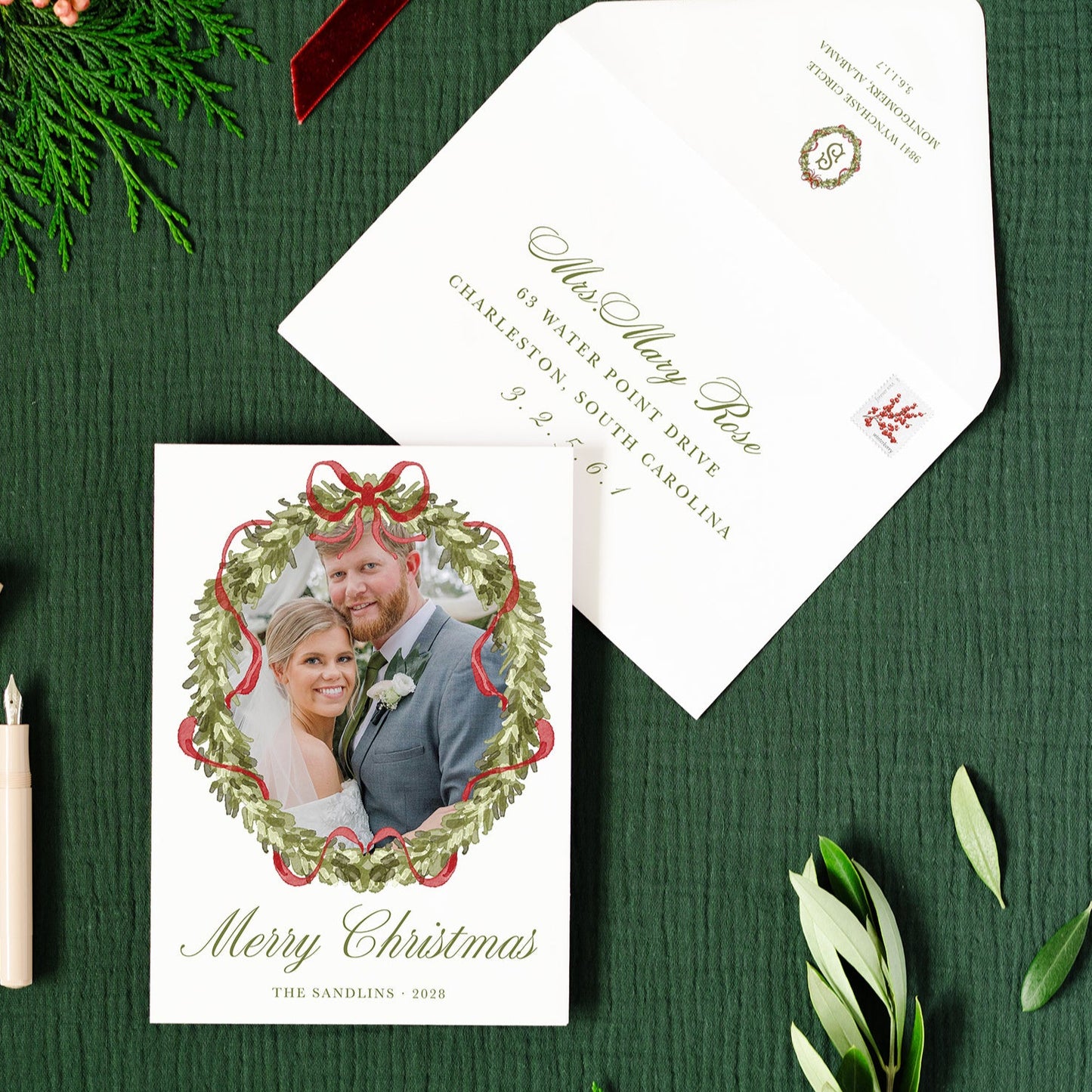
Once the champagne is popped and the post-engagement glow has set in, it’s time to tackle one of the most important pieces of your wedding planning: the invitations.
Your wedding invitation is more than a pretty piece of paper—it’s your guests’ first glimpse into your celebration. It sets the tone, conveys key details, and shows off your personality. But what exactly should be included (and what should stay far, far away)? Let’s break it down.
By the end of this post, you’ll feel confident knowing:
- What belongs on your invitation suite
- What details are best saved for your website or insert cards
So take a deep breath, shake off any stationery stress, and let’s create your classiest correspondence yet.

What To Include on a Wedding Invitation
1. The Host Line
Traditionally, the host is listed first. This could be the bride’s parents, both families, or the couple themselves—depending on who's hosting (or funding) the event.
Examples:
If the bride’s parents are hosting:
Mr. and Mrs. Brian Smith
request the pleasure of your company
at the marriage of their daughter
Olivia
to
Robert William Jones
If both families are hosting:
Together with their families
Olivia
and
Robert William Jones
request the honor of your presence
at their wedding
If the couple is hosting:
Olivia Smith
and
Robert William Jones
invite you to celebrate their marriage
2. The Couple’s Names
Yes, your names go on the invitation—but how they’re presented matters.
- If the bride shares a last name with her parents and they are hosting, you can skip her last name for elegance and clarity.
- The groom’s full name is typically written out. You may add “Mr.” for a more formal tone.
- Avoid abbreviations (especially initials); if you don’t want to use a middle name, it’s better to omit it entirely.
- Always use full names to avoid confusion—especially if there are other “Marys” or “Ashleys” in your guest list.
3. The Date and Time
For traditional invitations, spell out the date in full and avoid using numerals.
Saturday, the ninth of August
two thousand twenty-five
at half past three o’clock
If your celebration is more casual, numerals are perfectly acceptable:
Saturday, August 9, 2025 at 3:30 PM
Note: “Half past three” is the formal preference. You can add “in the afternoon” for clarity, especially if your wedding is earlier in the day.
4. The Ceremony Location
Include:
- Venue name
- City and state
- (Optional) Street address
You must include the full address if:
- It’s a private residence
- It’s a destination wedding
- There are multiple venues with similar names in the area
- Most guests are unfamiliar with the location
5. Reception Information
If the ceremony and reception are in the same place, a simple line like “Reception to follow” is perfect. For formal invites, you can say: “and afterward at the reception.”
If your reception is at a different venue, include a separate reception card with the details.
6. Attire (Optional)
Attire guidelines can go on a details or reception card, but if you're not including one, you may place the dress code in the bottom right corner of the invitation.
Keep it short:
Black Tie • Cocktail Attire • Garden Party Chic
For specific requests (like “wear flats for the lawn”), use a details card or your wedding website.
What Not to Include on Your Wedding Invitation
1. “Adults Only” Notes
While it’s totally fine to have a kid-free event, avoid placing “No kids” or “Adults only” on the main invitation. Instead:
- Address the envelope to the adults only
- On the RSVP card, say: “We have reserved ___ seats in your honor”
- Add a kind note to your wedding website, such as “We love your little ones, but this will be an adults-only evening.”
2. Registry Information
It’s helpful to share your registry—but never on the invitation. Registry details should live on your wedding website or be shared word-of-mouth.
3. Too Many Logistics
Avoid cluttering your main invitation with:
- Travel tips
- Things to do
- Weather forecasts
- Restaurant lists
These are best saved for your website or a printed details card.
4. Long Directions
Only include a directions or map card if your venue is difficult to find or guests are traveling from out of town. A simple map is a thoughtful touch, but not necessary if most guests will rely on GPS.
Use Insert Cards for These Extras
You can include additional cards in your suite for:
- Reception (if it’s in a different location)
- Accommodations (hotel blocks and group codes)
- Details (attire, transportation, etc.)
- Directions/Maps
- Wedding Website
Keep your invitation itself clean and elegant, and let the insert cards and your website do the heavy lifting.
Final Thoughts
Your invitation is your guests’ first impression of your wedding day—it should be as beautiful, intentional, and thoughtful as the event itself. With a little etiquette and a lot of personality, your invitation suite can strike the perfect balance between formal tradition and modern charm.
Need help wording your invitation or designing your custom suite? Let’s chat—I’d love to bring your paper dreams to life.





